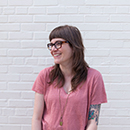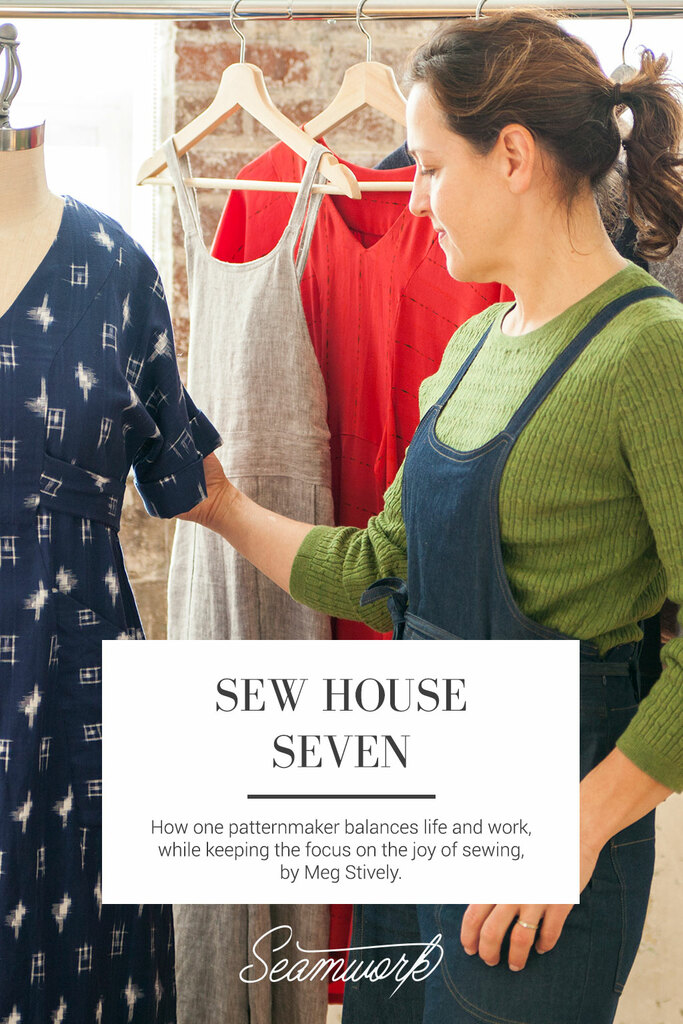Peggy Mead is the woman behind Sew House Seven, a pattern company that is growing in popularity worldwide. In fact, Peggy is the sole force behind Sew House Seven, because she does everything from designing the patterns to shipping them to your door. No stranger to apparel in general, Peggy’s path in the industry twisted and turned, and she eventually ended up with her dream—to be an independent patternmaker.
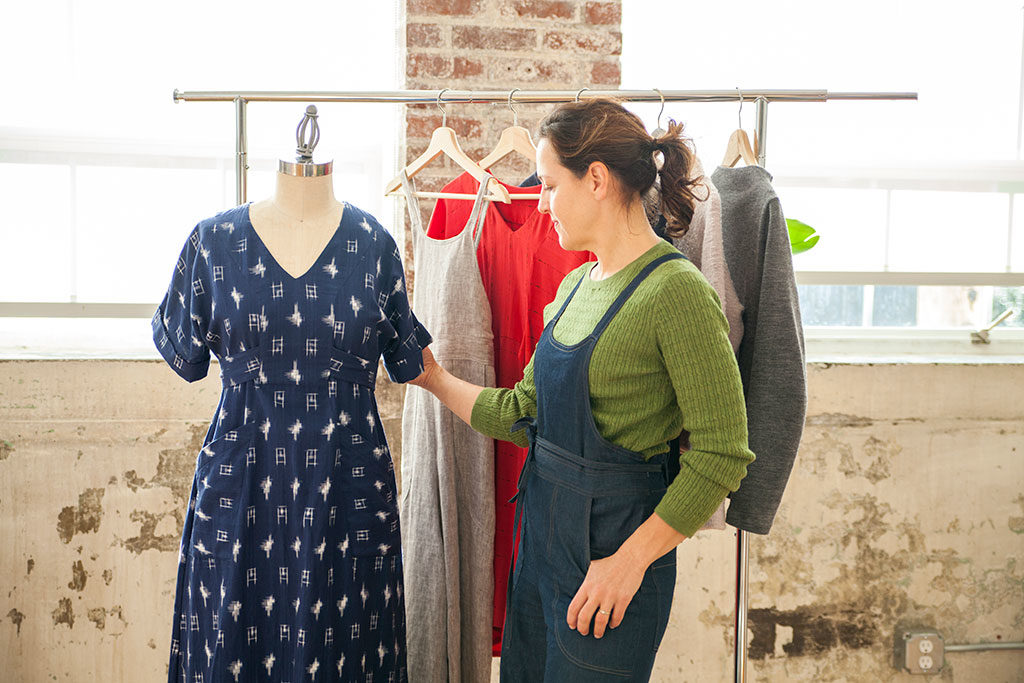
When we visited Peggy in her home studio, she greeted us with a smile and a plate of pastries. Her home has a view of snow-capped mountains, which she and her husband earned by fixing up and renovating the house themselves. Her son's guitars were on display in the living room, among a couple of textiles reminiscent of her time working at Pendleton, and some of the walls in the home were still waiting for final paint touches, evidence of a creative, hard-working family. Just off the living room, Peggy's studio faces the backyard, giving her enough light to sew and easy access to the outdoors, where she loves to be in her free time.
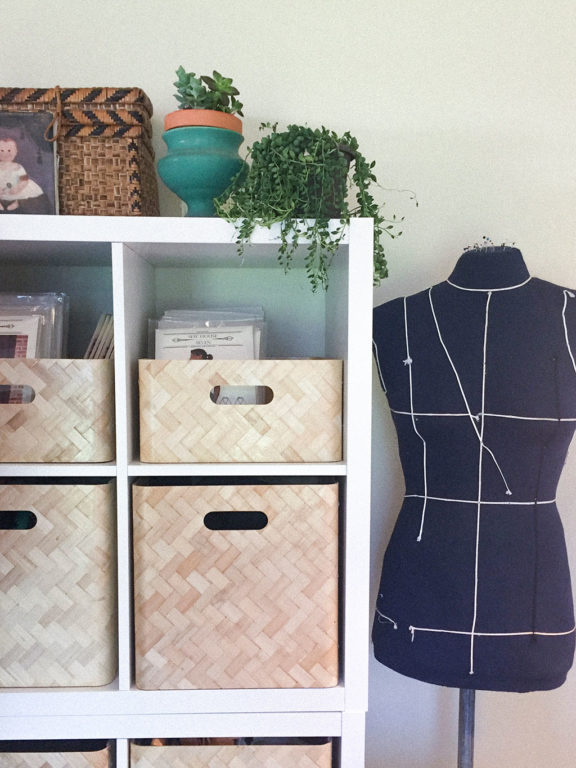
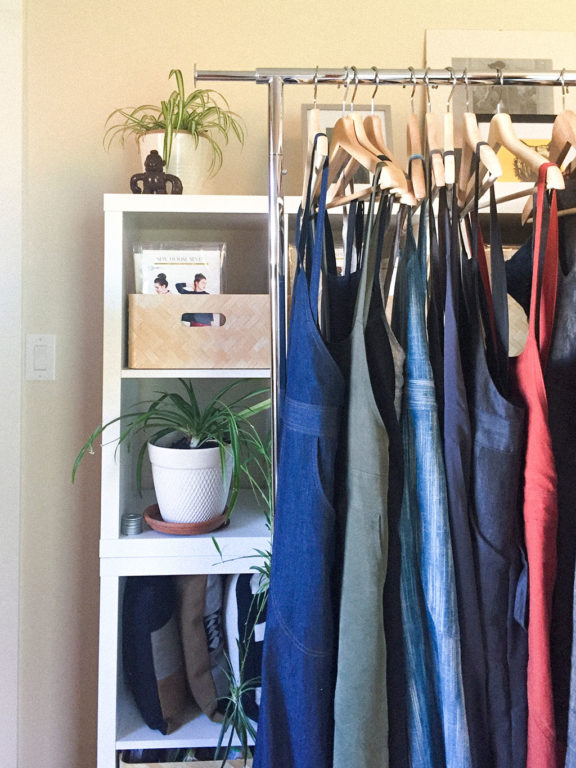
While working from home sounds like a dream, patternmaking takes up a bunch of time, space, and supplies, things you can't necessarily leave at the office when the office happens to be in your spare bedroom. For those who work from home, there's a tricky balance between work and play, which Peggy recognizes, “The most important key to finding balance is just getting a routine down. It’s difficult but important because then I don’t waste time wondering what to tackle and when. It’s just habit."
Peggy joined the industry in 2000, designing and patterning swimwear for Jantzen. Recalling the reality of her first industry position, she immediately had a funny story to share. She was sent on a mission to investigate the fit and cut of popular swimsuits—during a quintessential college Spring Break celebration. "I was the only sober person at Spring Break, taking pictures of swimsuits," she remembered with a smile. Most of these swimsuits, she noted, were sagging at the bottom. These saggy, Spring Break swimsuits sparked her passion for getting a good fit.
When she returned to Jantzen with her data and photographic evidence of an ill-fitting swimsuit epidemic, they refused to take her fitting notes, stating that traditional swimsuit construction was how it was always done, and what is conventional is best. Peggy laments that she had to work with poorly fitted swimsuit bottoms for her whole time at Jantzen, but it helped her learn that conventional is not always best, a lesson she now brings to her designs and instructions.
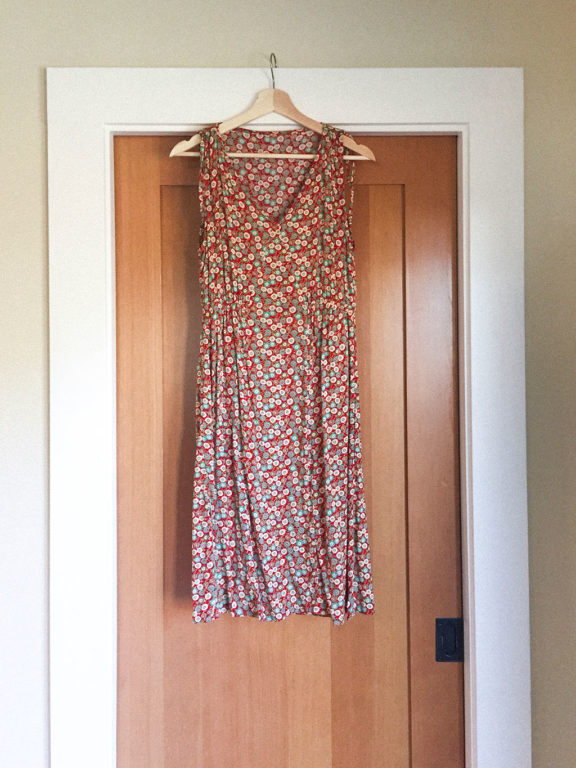
Her next stop in the apparel industry was as a surface designer for Pendleton, mostly working with sweaters and T-shirts. It was a one-of-a-kind job, but it didn't scratch her patternmaking itch, and after nine years, including the birth of her son, Peggy walked out on her own.
Heeding the advice of fellow makers, she decided to use all of her skills for her own line of patterns, so that she could oversee everything, from the design and textile to the fit. Just a few years later, finished versions of her Toaster Sweater, Tea House Dress, and Burnside Bibs were popping up all over the online sewing community.
How did Peggy make the switch to becoming an independent pattern designer? "I just jumped in," she laughs, "I said, 'I gotta do this.'" She didn't start by blogging or using Instagram but came armed with her experience in the apparel industry, which she used to create a company that seeks to celebrate the process of sewing with well-designed garments that you want to make as much as you want to wear.
Immediately after starting her own business, she noted, "You can do anything you want, but everything is you. You own all mistakes, deadlines, processes. Patternmaking is such a small part of everything else."
You run the bulk of your entire business from your home. How do you keep your home life separate?
Well, it’s difficult to do, especially with a relatively new business. I feel like I’m just starting to settle into that balance again. It’s easy to get distracted or work too much. If I didn’t have a husband and a kid, I would probably hunker down in my office and work continuously. Then, on the other hand, I would also probably fly off to the South Pacific with friends or take the day off and go play outside and not accomplish any work as well.
I tried to set boundaries for myself from the beginning, but sometimes work requires a little extra from me. I started Sew House Seven as a side job while I was still working at Pendleton. I knew I didn’t want it to be a hobby but rather an eventual career, so I had to work long hours and didn’t have a good work/life balance at all—I barely had time to sleep. I knew it was a temporary situation just to get the business going.
Now, I try not to work nights or weekends unless I have a deadline or an immediate problem. It is so important for me to spend time with my ten-year-old boy, Wylan, because time with him goes so fast, he’ll be out of the house before I know it. My flexible schedule is great because I can pick him up from school and hang with him but then I find that I need to make up a little of that time in the evenings sometimes because the time with him eats into my full workday.
What helps you unwind when you need to get your work/life balance back?
My husband and I really need to get our outdoor fix or we just feel off being locking indoors and in the city. I used to do a lot of outdoor activities like kayaking, mountain biking, climbing, and hiking. Nowadays, I don’t have as much time, but I still try to do some of those activities at least three times a month, so I can stay mentally sane and physically healthy. I also have to fit in a workout almost daily. I thought that would be easier with my own business but it seems to be more difficult, because if something has to give to get things done, that’s usually one of the things I have to give up. I have to note that my husband helps me so much with anything I can’t get done so that I can spend time with the family or go to bed at a reasonable hour. He really is Superman!
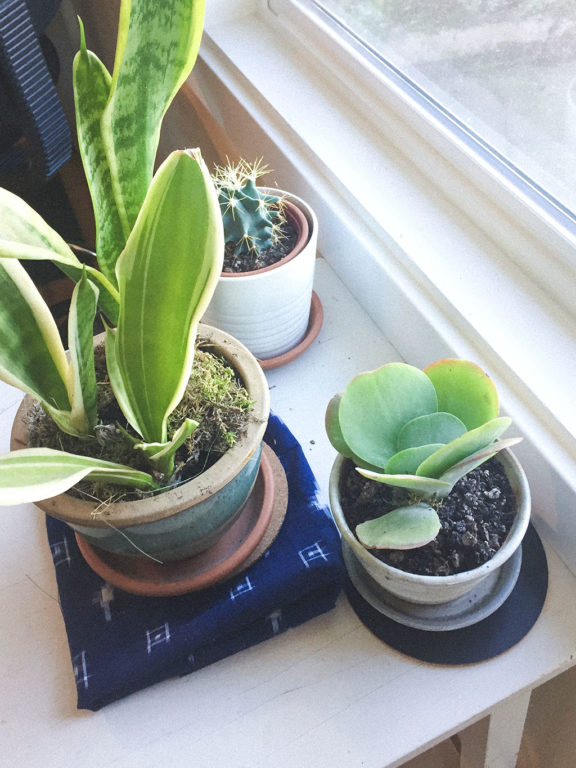
Where do you usually get inspiration for new designs?
I feel like I am just now getting a bit of a rhythm and routine for process and I get design inspiration from so many places. Designing is, of course, my favorite part of the whole business but it’s really just a small part of it time-wise. It’s a real treat for me, and I get so excited when I clear enough off of my plate to start designing.
Even though I don’t get much time to work on new designs, I’m always thinking about it and I keep quick sketches and ideas by my side at my desk. I look at Pinterest probably more than magazines, and I sometimes step out of the office and look in a shop or two, but mostly inspiration comes from what I see people wearing online or out in the wild and on the streets and then combining that with my own ideas.
I often change my mind when it comes to designs as well. Usually, a design changes from the time I conceive it to the time of execution. My taste will change, or I’ll decide it would look better or function better this way or that during fitting. I like that I can freely do that because that kind of behavior would never fly in a big company setting. The problem comes with reigning in my propensity to spin off designs and tweak things. I can see why having a clear vision is a good idea, but I’ve always been a free-form kind of gal.
Some of your patterns are licensed with Simplicity. How important is it to you to remain an independent designer?
I am so honored to have a few patterns with Simplicity, but I will always be an independent designer first. Not because I feel that indie is so much better and I’m against the corporate patterns, but rather because I like to do things my own way and sometimes that isn’t always the conventional way, and indie patternmaking allows me to do that.
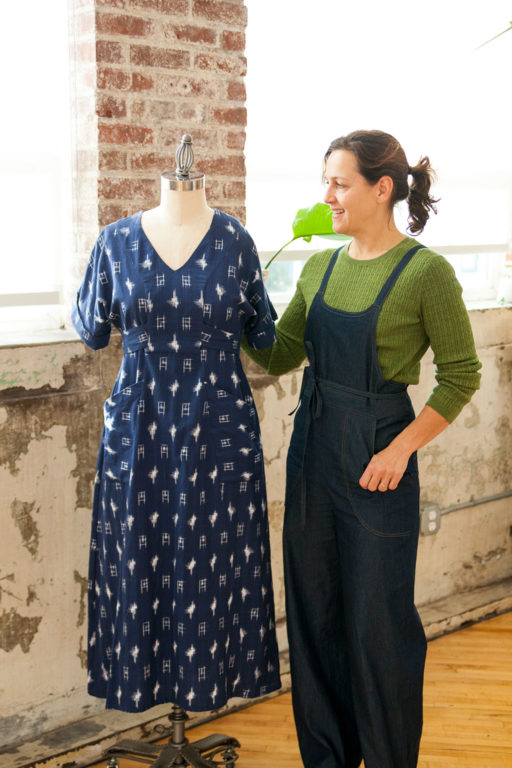
When Simplicity contacted me two years ago, I was still working at my day job and Sew House Seven was a floundering little side business. They emailed me, and I thought it was a joke. I couldn’t believe they had found me and would really want my designs. I was so flattered, but also still knew so little about the business that I didn’t know how to respond. I didn’t know if my customers would be happy, upset, indifferent.
The more I thought about it, the better I felt about the opportunity. I grew up sewing with Simplicity patterns. I learned so much about sewing from them, and now I had the opportunity to show their customers a little window into the indie sewing world. Some customers use both indie and big 4 patterns, and others stick to one or the other. I am certain there are so many people who don’t even know that indie patterns exist. If Simplicity takes us seriously, why wouldn’t their customers?
What is your favorite thing about the sewing community? How do you want to be a part of it in the future?
This amazing sewing community was a gift—icing on the cake that I wasn’t planning on. I love this sewing community so much! I guess my favorite part of the community would be how supportive everyone is—not just with me but with each other.
I’m embarrassed to say that when I started Sew House Seven, I had no idea about the online sewing community. I researched how to go about the mechanics of the business but not the market. I just knew I wanted to do it and hoped that the audience would appear. I didn’t start with a blog, I didn’t read blogs or look at Instagram or Facebook. Once I put my product out there and discovered all of this (the great sewing community), I was floored how awesome it was!
I was so surprised and ecstatic to find that everyone—sewists, pattern designers, fabric shops—everyone promotes and helps each other and it’s not competitive. We all want each other to be winners.
I was expecting, but not looking forward to, having to plug my designs and compete with other pattern companies. I was so surprised and ecstatic to find that everyone—sewists, pattern designers, fabric shops—everyone promotes and helps each other and it’s not competitive. We all want each other to be winners. It’s also still so amazing to see the patterns I’ve created on the people who sew them up and often really make them their own by changing them up or sewing them in some amazing fabric I haven’t seen.
I love to hear about their struggles and successes, and I often form relationships with these other sewists from all over the world. It’s especially meaningful to me working from home by myself—I don’t feel quite so alone.
It took Peggy a couple of tries in the apparel industry to find her place, but now she wouldn't have it any other way. When asked if she would be adding a well-fitting swimsuit pattern to her Sew House Seven line, she laughed and just said, "Nope."
To view Peggy's entire collection, check out the Sew House Seven shop. If you need a boost for your next sewing project, be sure to read her advice on how to make a pattern truly your own, also in this month's issue.
